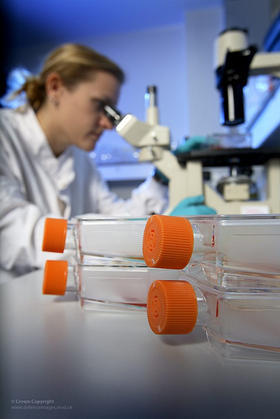Women In Science
On February 11, 2017, the global
community paused to commemorate the United Nations Internationally Day of Women
and Girls in Science. The United Nations Educational, Scientific and Cultural
Organization (UNESCO) estimate that only 28 per cent of researchers are
females. Historically, women and girls have been restricted from achieving
their human rights to an education. Many jurisdictions in an attempt to
increase the participation of women and girls in the fields of science have
been placing more emphasis and resources on STEM (Science, Technology,
Engineering and Mathematics). Jamaica’s new National Standard Curriculum (NSC)
is pivotal in addressing the disconnect between the participation of both sexes
regarding equal access to education.
It bears thought that governments all across the globe need to be more responsive to the needs of women and girls in achieving gender equality. Sadly, the breaking of the class ceiling is still a dream for many women and girls particularly in some societies where patriarchal structures and toxic cultures are more entrenched both in the public and private spheres. These factors serve as a barrier to women’s full and equal participation to education and training.
In order for any society to advance and progress the rights of women and girls must be protected and expanded. The 21st century female must be not be hindered by intersectional factors, such as, income, geography, age, race. It is estimated that 2.5 million new engineers and technicians will be required in sub-Saharan Africa in the areas of Science and Technology; regrettably, these jobs will more than likely be filled by men if women are not encouraged to pursue these career paths.
Interestingly, the United Nations Sustainable Development Goal #5 speaks to achieving gender equality and the empowerment of women and girls which more societies clearly need to pay more attention to.
A gradual change and shift over the years in how women and girls view and access education more so higher education manifests itself, especially at the University of the West Indies, Mona Campus, where females, inclusive of the faculty of medical sciences account for the majority of all graduating students. The time has come for all societies to close the gender digital divide which is a critical pillar for achieving sustainable development. In the words of Beth Simone Noveck, “starting early and getting girls on computers, tinkering and playing with technology, games and new tools is extremely important for bridging the gender divide, that exists now in computer science and technology”.
#WomenInScience
Wayne Campbell
waykam@yahoo.com
@WayneCamo

It bears thought that governments all across the globe need to be more responsive to the needs of women and girls in achieving gender equality. Sadly, the breaking of the class ceiling is still a dream for many women and girls particularly in some societies where patriarchal structures and toxic cultures are more entrenched both in the public and private spheres. These factors serve as a barrier to women’s full and equal participation to education and training.
In order for any society to advance and progress the rights of women and girls must be protected and expanded. The 21st century female must be not be hindered by intersectional factors, such as, income, geography, age, race. It is estimated that 2.5 million new engineers and technicians will be required in sub-Saharan Africa in the areas of Science and Technology; regrettably, these jobs will more than likely be filled by men if women are not encouraged to pursue these career paths.
Interestingly, the United Nations Sustainable Development Goal #5 speaks to achieving gender equality and the empowerment of women and girls which more societies clearly need to pay more attention to.
A gradual change and shift over the years in how women and girls view and access education more so higher education manifests itself, especially at the University of the West Indies, Mona Campus, where females, inclusive of the faculty of medical sciences account for the majority of all graduating students. The time has come for all societies to close the gender digital divide which is a critical pillar for achieving sustainable development. In the words of Beth Simone Noveck, “starting early and getting girls on computers, tinkering and playing with technology, games and new tools is extremely important for bridging the gender divide, that exists now in computer science and technology”.
#WomenInScience
Wayne Campbell
waykam@yahoo.com
@WayneCamo



Comments
Post a Comment